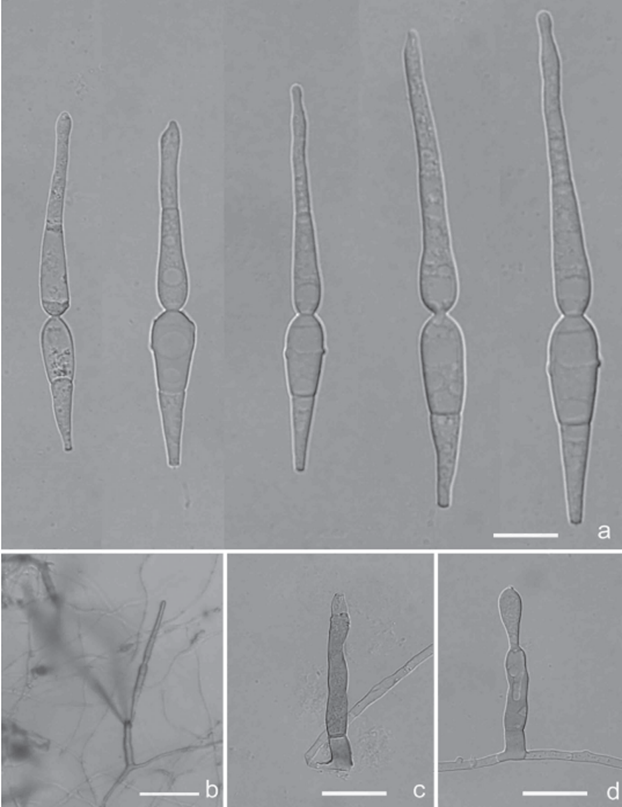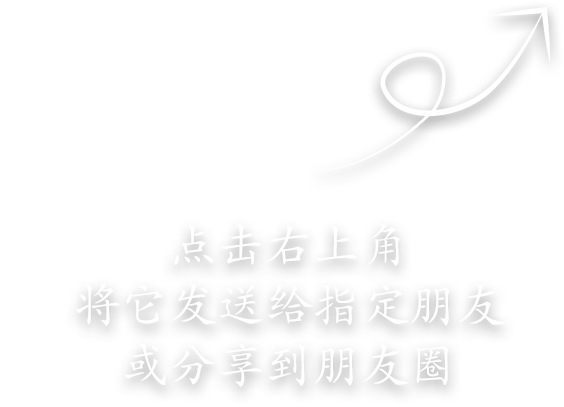 86
86
Isthmomyces macrosporus Z. F. Yu, M. Qiao & R. F. Castañeda, sp. nov. 2021
Fungorum number: IF556128
Facesoffungi Number No: FoF05742
Holotype YMF 1.04518
Morphological description :
Asexual morph: hyphomycetous. Colonies on PDA amber to fawn, reverse fawn, attaining 2 cm diam. after 20 days at 25 °C. Mycelium mostly immersed, composed of branched, septate, slender, colourless hyphae. Conidiophores macronematous, mononematous, cylindrical, erect, straight, unbranched, 0–1-septate, smooth, pale brown, 25–35 × 3.0–3.5 µm. Conidiogenous cells polyblastic, cylindrical, denticulate, sympodial extended, integrated, terminal, pale brown or subhyaline. Conidia acrogenous, isthmospore, long fusiform, hyaline, smooth, 36.5–73.0 µm long, strongly constricted at the conspicuous, narrow, tiny central isthmus, sometime not differentiated, composed of two cellular isthmic-segments: i) basal isthmic-segment clavate, truncated at the base, 1-septate, hyaline or subhyaline, smooth, 19.2–31.1 ×4.5–6.7 µm; ii) apical isthmic-segment 0–1-septate, narrow obclavate, sometimes subobspathulate, rounded at the tip, unicellular, guttulate, hyaline or subhyaline, smooth, 21.1–42.0 × 3.3–5.4 µm.
Sexual state: unknown.
Culture characteristics:
Habitat: on submerged leaves,
Distribution: China, Hainan Province, Limu Mountain National Conservation Area,
GenBank: lsu MK577812; its MF740796.
Notes: Phylogenetically, Isthmomyces macrosporus is close to I. dissimilis and I. lanceatus. However, I. macrosporus is different from all species within this genus by having larger conidia, obviously brown conidiophores and few denticulate conidiogenous cells (Hoog and Hennebert 1983).
 Isthmomyces macroporus (Holotype YMF 1.04518) a conidia b conidiophore with conidia under low objective c conidiophore and conidiogenous cell d conidiophore and developing conidia. Scale bars: 10 µm (a, c, d); 50 µm (b).
Isthmomyces macroporus (Holotype YMF 1.04518) a conidia b conidiophore with conidia under low objective c conidiophore and conidiogenous cell d conidiophore and developing conidia. Scale bars: 10 µm (a, c, d); 50 µm (b).

